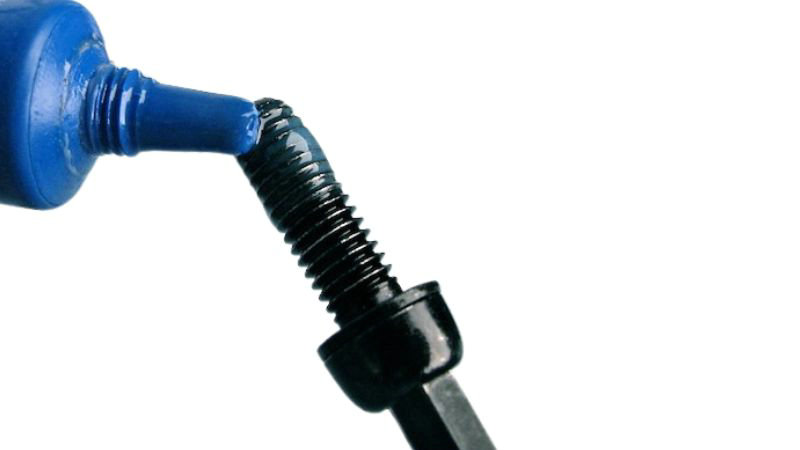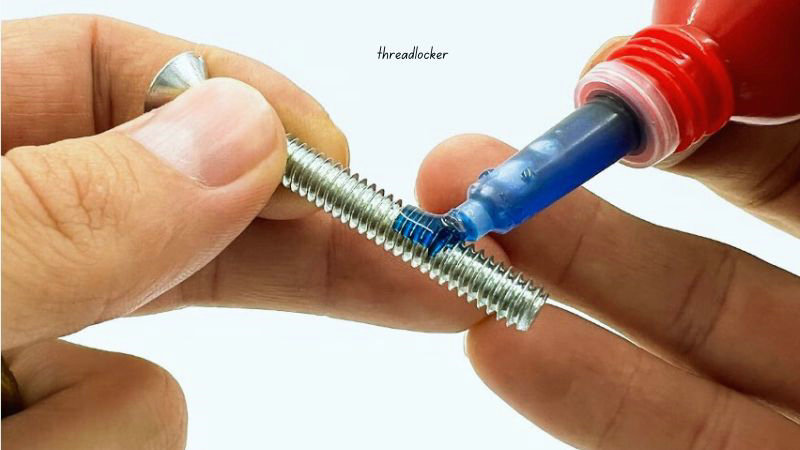Ever had a bolt come loose at the worst possible moment? That’s where thread lock comes to the rescue.
Thread lock is a type of adhesive used to secure threaded fasteners like bolts, nuts, and screws to prevent loosening, leakage, and corrosion.
It’s essential for machinery and equipment that experience constant vibration and movement.

You might wonder how this simple adhesive works its magic.
Thread lock is often methacrylate-based and activates through the electrochemical activity of metal.
It comes in various forms, including liquids, pastes, and waxes, each tailored for different applications and strengths.
When you use thread lock, you’re protecting your work from falling apart.
Whether it’s for delicate electronics or heavy-duty engines, thread lock ensures that your fasteners stay put.
Dive into the details and discover which type suits your needs best.
Understanding Thread Locking
Thread locking is used to secure threaded fasteners such as bolts, nuts, and screws. The adhesive prevents the fasteners from loosening due to vibrations and dynamic loads, making structures and machinery more reliable.
Basics of Thread Locking
The primary function of thread lock is to prevent fasteners from shaking loose.
When you apply thread lock, it fills the gaps between the threads which helps in distributing the load. This ensures that the fastener remains tight even under stress.
Thread locker adhesives are typically anaerobic.
This property makes them ideal for creating a strong bond in closed spaces like the threads of a bolt and nut.
When liquid thread locker adhesives come into contact with metal and are deprived of air, they undergo a process called polymerization.
Types of Thread Lockers

There are various types of thread lockers, each designed for specific applications. The most common include low strength, medium strength, and high strength.
- Low Strength: Typically used for small screws like those in electronics. They allow easy disassembly with hand tools.
- Medium Strength: Suitable for applications where you need a solid hold but also might need to disassemble the parts in the future.
- High Strength: Provides the strongest bond and is used in permanent applications. Removal usually requires heating the fastener.
Products like Loctite offer a range of thread lockers.
For instance, Loctite Threadlocker Blue 242 is a medium-strength adhesive that can be disassembled with common tools, while Loctite Threadlocker Red 271 provides high strength for more permanent fixes.
Application and Removal

Thread lock is essential for keeping fasteners secure and can be applied to bolts, screws, and nuts. Understanding the correct application and removal process ensures effectiveness and prevents damage.
Preparing for Application
Cleaning the fasteners and surfaces is the first step. Use a degreasing agent or cleaner, and make sure there’s no oil, dirt, or debris.
Cleaning threads ensure the thread locker bonds properly.
Selecting the right thread locker is also crucial.
Blue (medium strength) is suitable for bolts that may need later adjustments. Meanwhile, red (high strength) requires more effort for removal.
For faster curing on inactive materials, you can use activators. Always read the product instructions for specific use.
Applying Threadlocker
Once the surfaces are clean, apply the thread locker.
Shake the bottle well before use. Place a few drops on the bolt threads.
Ensure the thread locker covers the entire threaded area.
Assemble the parts immediately after applying the thread locker. This ensures an even spread and prevents premature curing.
After assembly, allow the thread locker to cure.
The curing times are different.
Removing Thread-locked Fasteners
Removing medium-strength thread lockers (blue) is straightforward. Use standard hand tools like wrenches or screwdrivers.
High-strength thread lockers (red) need special treatment.
Apply localized heat using a propane torch or induction heater. This softens the adhesive bond.
After heating, use hand tools to remove the fastener.
Be careful to avoid burns and damage to surrounding parts. Properly handled, your fasteners will be free without much difficulty.
Types and Selection Criteria
When choosing a thread lock, you’ll need to consider color coding and strength levels, as well as selecting the right type based on your specific needs.
Color Coding and Strength Levels
Thread lockers are often color-coded to indicate their strength and purpose. This makes it easier for you to pick the right one:
- Red: High-strength thread locker, often labeled as permanent. Requires heat to remove.
- Blue: Medium-strength threadlocker, designed for removable applications. Can be taken apart with hand tools.
- Purple: Low-strength thread locker, used for small screws and fasteners requiring minimal torque.
Each color corresponds to a different application. High-strength options are best for things that shouldn’t be disassembled often. Meanwhile, medium and low-strength thread lockers are easier to break free.
Selecting the Right Threadlocker
Choosing the right thread locker depends on multiple factors:
- Thread Size: Use low-strength for small threads and medium-strength for larger ones.
- Torque Requirements: Consider how much torque you need. High-strength thread lockers can handle higher torque demands.
- Specific Application: Think about the environment. For instance, wicking-grade thread lockers are great for pre-assembled parts.
